Few bikes so consistently exceed our expectations like BMW 's S1000RR. It's a rolling paradox: the fiercest superbike on the market, with utterly displacement-defying acceleration, but at the same time the most rider-friendly with such sophisticated and effective electronic rider aids. This year BMW set out to make what was already the fastest, smartest, most accessible superbike even sharper and, at the same time, even more rider-friendly too. And the German firm succeeded in every way, outpacing our expectations once again.
This is technically the third-generation RR—or fourth, if you count the exclusive 2014 HP4, which you should since so much HP4 technology, including Dynamic Damping Control (DDC) electronic suspension, appears here. As is BMW’s habit, this is no light update. The S1000RR platform has been wholesale redesigned for the third time in just six years and to great effect. Peak power has been boosted to an almost credibility-challenging 199 hp (claimed); a near-9-pound weight loss reduces claimed curb weight to 449 pounds; and an even longer list of rider-friendly features includes a new quickshifter that works up and down and even cruise control. And we thought heated grips were gratuitous…
It’s almost unbelievable that BMW could extract more power from this 999cc inline-four—the HP4 produced 178 rear-wheel horsepower on our dyno—but reconfigured port geometry, a new intake cam, lighter intake valves, and friction reducing slide-honed cylinder barrels increase peak output by a claimed 6 hp. More importantly, the more compact E-Gas electronic engine management system from the S1000R naked bike makes room for a much larger airbox with variable-length intake stacks. This change, plus an all-new exhaust system, improves torque characteristics across the rev range (the new exhaust saves a whopping 6 pounds too).
The result is more torque as low as 4,500 rpm, BMW says, and an even broader torque plateau, now delivering more than 80 pound-feet of torque between 9,500 and 12,000 rpm (peak torque of 83 pound-feet occurs at 10,500 rpm; redline is just beyond 14,000 rpm). Pick a gear—any gear, it doesn’t matter—and the S1000RR pulls ferociously hard, especially once revs enter the double digits. Wait for that shift light though. The RR accelerates so strongly from just 8,000 rpm—and sounds so good doing it—that we often found ourselves short-shifting before 12,000 rpm, leaving plenty of power on the table. How could any bike pull this hard for this long?
Premature shift action was partly eagerness to engage the optional quickshifter—or Gear Shift Assistant Pro (GSA Pro) in BMW argot—which executes instant clutchless upshifts and now downshifts too, leveraging the E-Gas system to precisely match revs for seamless downshifting into corners just like a MotoGP bike. It takes an experienced rider a few laps to overcome the ingrained habit of blipping the throttle (GSA Pro works best with the throttle fully closed, getting grumpy when coarse wrist inputs collide with advanced electronic algorithms), but the reward is preternaturally smooth corner entries and more attention devoted to braking and turn-in, now that you no longer have to manage the clutch. GSA Pro works so well it makes any further discussion of dual-clutch or other automatic transmissions seem utterly irrelevant.
Intelligent shifting is just the tip of the electronics iceberg. Three ride modes—Rain, Sport, and Race—come standard, each with Automatic Stability Control (ASC, or traction control), ABS, and power-delivery responses tailored to suit prevailing riding conditions. An optional Race package adds lean-angle-enabled Dynamic Traction Control (DTC) and two additional riding modes—Slick and User, the latter custom-configured by the rider—plus launch control, a pit-lane speed limiter, and, for the first time on any sportbike, cruise control. As they say on late-night TV, that’s not all: The Dynamic option package adds DDC electronic suspension that instantly and automatically adjusts damping rates in response to real-time riding conditions. DDC offers three baseline settings—Road, Dynamic, and Track—to coordinate with each standard ride mode, and suspension response can be softened or stiffened seven steps in either direction on the fly via a handlebar switch. BMW just gets the rider interface.
After years of increasingly complex press briefings that only devolved into acronym collisions and ever-more-complicated hypotheticals—“should the lean-angle sensor detect a roll rate contrary to what’s anticipated given brake pressure or throttle position…”—the RR development team finally admitted the electronic systems are too complicated to explain in detail and left it at that. Just trust that everything has been tweaked for this new model. Wheelie control and rear-wheel lift detection, for example, are both more permissive in Race mode. Provided your control inputs remain smooth and never sharp, you can raise either wheel to frankly terrifying heights before the overrides step in. And both are deactivated in Slick mode, should you still insist on carbon-based risk management, you silly human.
The new S1000RR is much, much smarter than you and nearly impossible to fool. Even when you try to trick the bike, you can’t. Turn traction control all the way down to -7 (the lowest of 15 adjustable-on-the-fly settings) in Slick mode, for example, then lean over and snap the throttle. Of course the bike will slide—there’s likely an honest 180 hp at the rear contact patch—but before you even realize what’s happening DTC reins in the slide and DDC calms any chassis motion and you’re back on line and only rocketing forward faster than you ever intended. This bike seems nearly impossible to override. No matter how crazy your demand, it complies without drama, suggesting that any limit is far beyond your reach. When you’re on point, the S1000RR makes you feel like you can do no wrong. When you’re off the mark, it will save your ass. This is a great, confidence-inspiring, near-transformative sportbike.
Next-level technology aside, the traditional twin-spar aluminum frame hasn’t been ignored. Steering angle has been reduced to 23.5 degrees, and trail has been shortened to 3.8 inches to improve front-end feedback, while the wheelbase was stretched slightly (to 56.1 inches) and the swingarm pivot lowered 3mm to improve rear-tire traction. The subframe is all new and lighter, too, while ride height has been raised 5mm front and rear to improve cornering clearance and handling agility. Flicking side to side in the tight, slow-speed chicane at Monteblanco Circuit in Seville, Spain, the S1000RR felt more responsive than before, without sacrificing any high-speed stability.
It’s quite remarkable what BMW has done with this latest evolution of its S1000RR. This is the most features-rich sportbike on the market—one of the most features-rich motorcycles period, regardless of category—with the most complex rider-aid technology yet devised, still it’s unbelievably intuitive and easy to ride. The bike will make every decision for you, should you desire; just select the correct ride mode. Alternately, you can tuck into User mode and tailor each individual setting from TC to ABS to engine braking response to suspension profile and more exactly to your liking. Whether you know nothing about riding fast or you think you know everything, the S1000RR is the perfect bike. BMW isn’t slowing down its relentless quest to improve its top-of-the-line superbike, and it’s going to be exceedingly difficult for other sportbike makers to catch up.










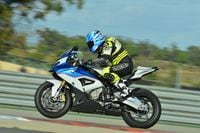
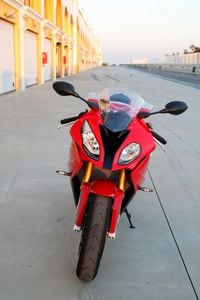


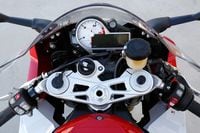

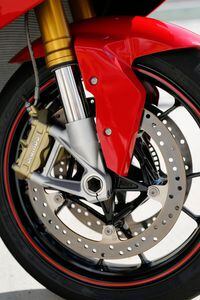

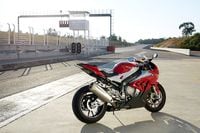
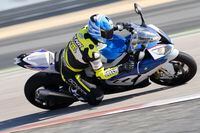
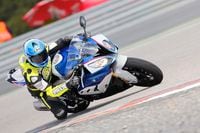

/cloudfront-us-east-1.images.arcpublishing.com/octane/GTCXACQGJ5HAPDTGWUQKDEH44E.jpg)
/cloudfront-us-east-1.images.arcpublishing.com/octane/S35YGSEMEZB4BLTDJTSZPF4GLA.jpg)
/cloudfront-us-east-1.images.arcpublishing.com/octane/5UOT6HPX2JFMRJAX6EH45AR4MQ.jpg)
/cloudfront-us-east-1.images.arcpublishing.com/octane/OKWOJWAKP5EP3OACCRRWPCIX2Q.jpg)
/cloudfront-us-east-1.images.arcpublishing.com/octane/2WF3SCE3NFBQXLDNJM7KMXA45E.jpg)
/cloudfront-us-east-1.images.arcpublishing.com/octane/G4MG6OUCJNBSHIS2MVVOTPX65E.jpg)
/cloudfront-us-east-1.images.arcpublishing.com/octane/IIGGWFOTOJGB7DB6DGBXCCMTDY.jpg)
/cloudfront-us-east-1.images.arcpublishing.com/octane/QSTCM6AVEZA5JJBUXNIQ3DSOF4.jpg)
/cloudfront-us-east-1.images.arcpublishing.com/octane/U4I7G625B5DMLF2DVIJDFZVV6M.jpg)
/cloudfront-us-east-1.images.arcpublishing.com/octane/B6XD6LS6IVCQPIU6HXDJSM3FHY.jpg)
/cloudfront-us-east-1.images.arcpublishing.com/octane/ICL63FEDDRDTTMINYICCEYGMDA.jpg)
/cloudfront-us-east-1.images.arcpublishing.com/octane/FCGZHQXRBZFLBAPC5SDIQLVF4I.jpg)
/cloudfront-us-east-1.images.arcpublishing.com/octane/WNOB6LDOIFFHJKPSVIWDYUGOPM.jpg)

/cloudfront-us-east-1.images.arcpublishing.com/octane/X33NU3E525ECRHXLNUJN2FTRKI.jpg)
/cloudfront-us-east-1.images.arcpublishing.com/octane/6KKT5NNL2JAVBOXMZYS5ZO76YA.jpg)
/cloudfront-us-east-1.images.arcpublishing.com/octane/J5RKG5O455GMPGQRF2OG6LRT7A.jpg)
/cloudfront-us-east-1.images.arcpublishing.com/octane/GX2CIZKQVRH2TATDM26KFG2DAE.jpg)
/cloudfront-us-east-1.images.arcpublishing.com/octane/ZWIDYSAKQZHD5BHREMQILXJCGM.jpg)
/cloudfront-us-east-1.images.arcpublishing.com/octane/CYUHJZCTSJCH3MRAQEIKXK7SCQ.jpg)
/cloudfront-us-east-1.images.arcpublishing.com/octane/LKOFINY56FCXJCANJ5M7ZDQUBY.jpg)
/cloudfront-us-east-1.images.arcpublishing.com/octane/4NBPDACMWJH63JQYJVK3QRBDZI.jpg)
/cloudfront-us-east-1.images.arcpublishing.com/octane/KKHQHRR3FJGX7H2IPU6RALMWG4.jpg)
